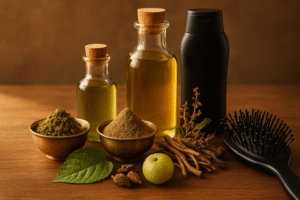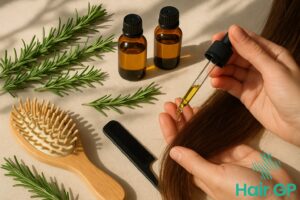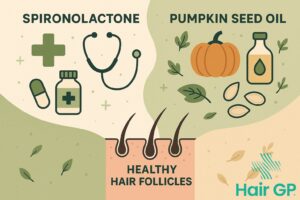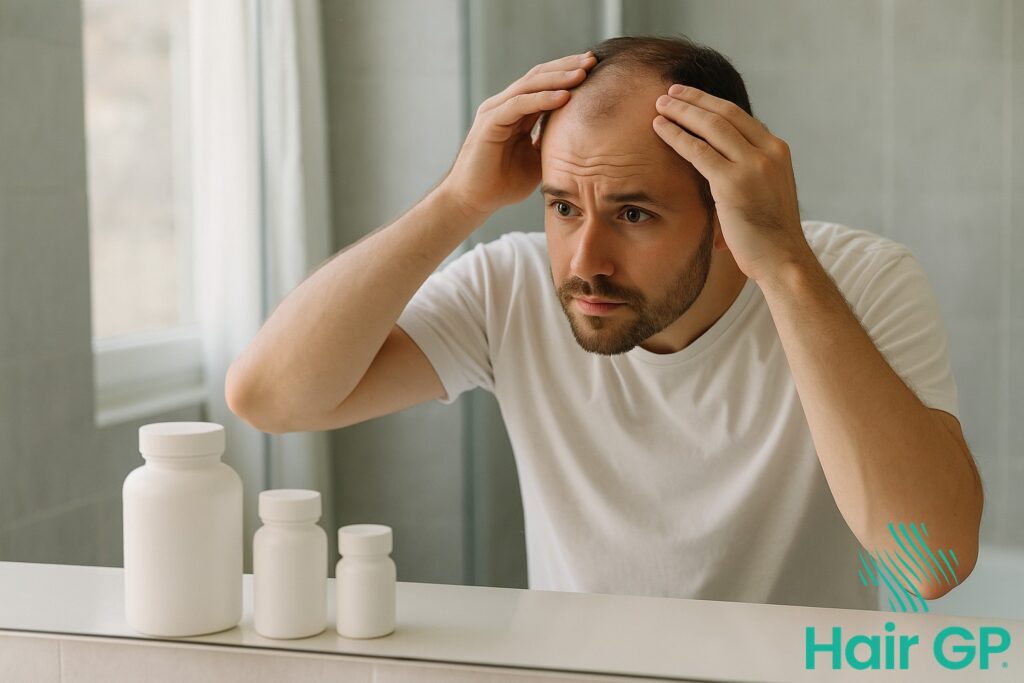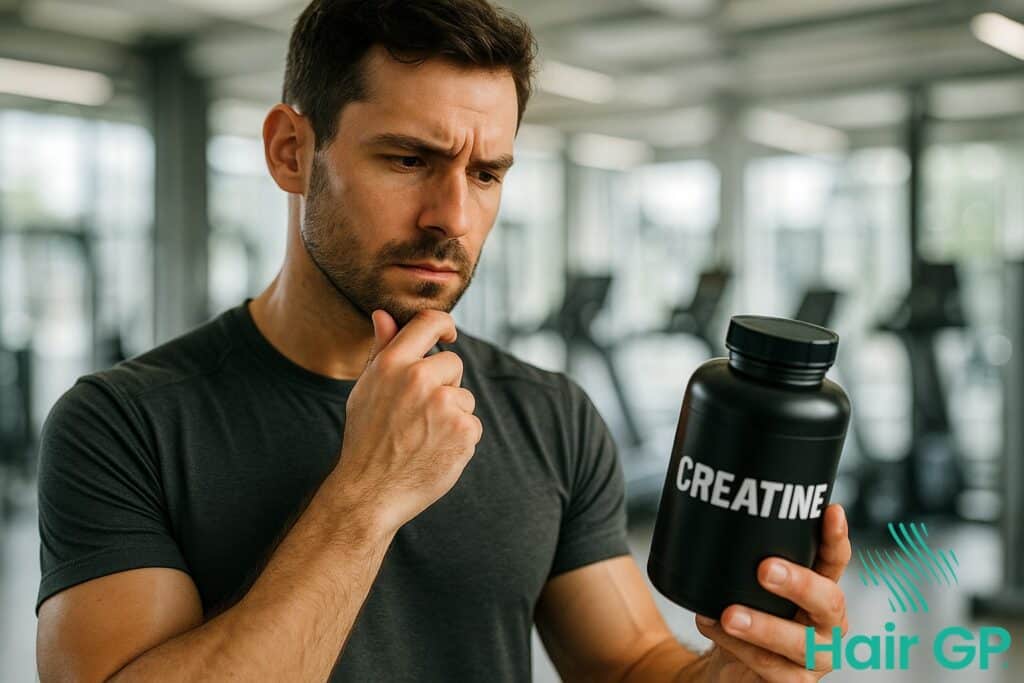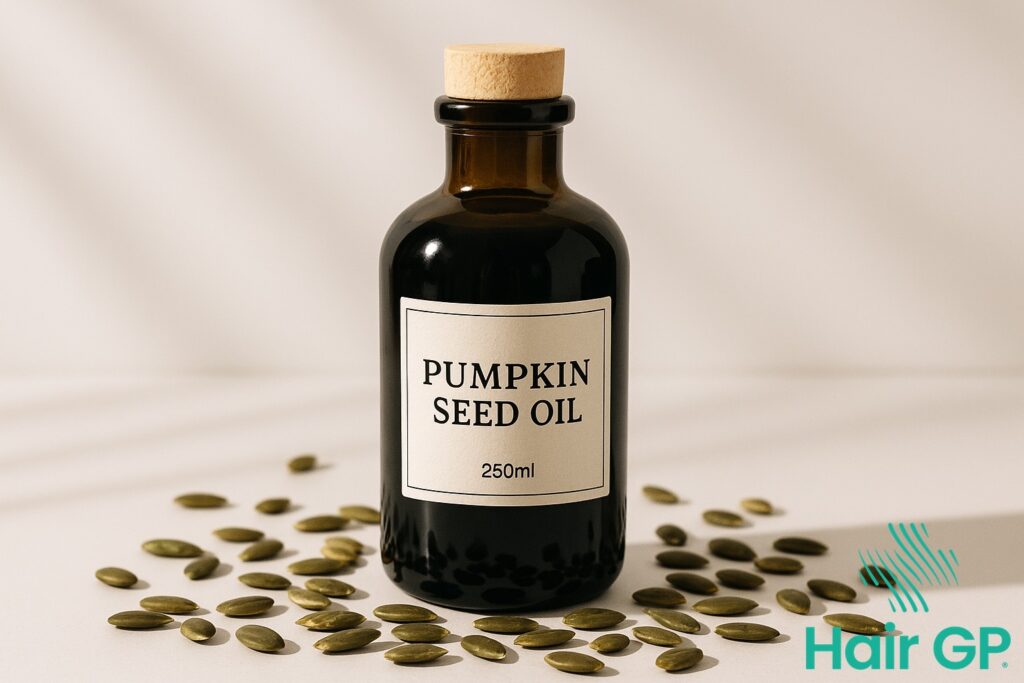Introduction
Peppermint oil for hair has emerged as a popular natural hair care solution, offering a refreshing approach to achieving healthier locks and scalp. Derived from mentha piperita, this potent essential oil contains powerful compounds that have captivated beauty enthusiasts and professionals alike. Beyond its invigorating aroma, peppermint oil delivers remarkable benefits for hair growth and overall scalp health.
This comprehensive guide explores how this versatile oil can transform your hair care routine. We’ll examine its botanical origins and key components, uncover the science behind its effectiveness for stimulating follicles, and reveal its soothing properties for various scalp conditions. You’ll discover practical application methods, learn about ideal carrier oil pairings, and find simple DIY scalp treatments to incorporate into your regimen. We’ll also address important safety considerations to ensure you harness peppermint oil’s benefits whilst avoiding potential sensitivities. Whether you’re seeking natural solutions for thinning hair or simply want to enhance your current routine, this guide provides evidence-based insights for optimal results.
Key Takeaways – TL/DR
- Peppermint oil stimulates blood circulation to hair follicles, potentially promoting hair growth
- Natural menthol provides cooling sensation that soothes itchy scalp and reduces dandruff
- Must be diluted with carrier oils like jojoba oil to prevent irritation
- Studies suggest effectiveness comparable to minoxidil for some hair loss conditions
- Can be added to shampoo and conditioner bottles or used in DIY scalp treatments
What Is Peppermint Essential Oil?
Peppermint essential oil derives from the leaves of Mentha piperita, a hybrid mint cultivated worldwide for its distinctive aromatic properties. The oil extraction process typically involves steam distillation of fresh or dried peppermint leaves, yielding a potent concentrate rich in bioactive compounds. Chemical analysis reveals menthol as the primary constituent, comprising 30-50% of the oil’s composition, alongside significant amounts of menthone, limonene, and linalool[1]. These compounds contribute to peppermint oil’s characteristic cooling sensation and therapeutic properties. Traditionally valued in aromatherapy for its energising effects and digestive support, peppermint oil has been utilised in cosmetics and personal care products for centuries. Its antimicrobial and anti-inflammatory properties made it particularly prized in traditional medicine long before its modern applications in hair care emerged.
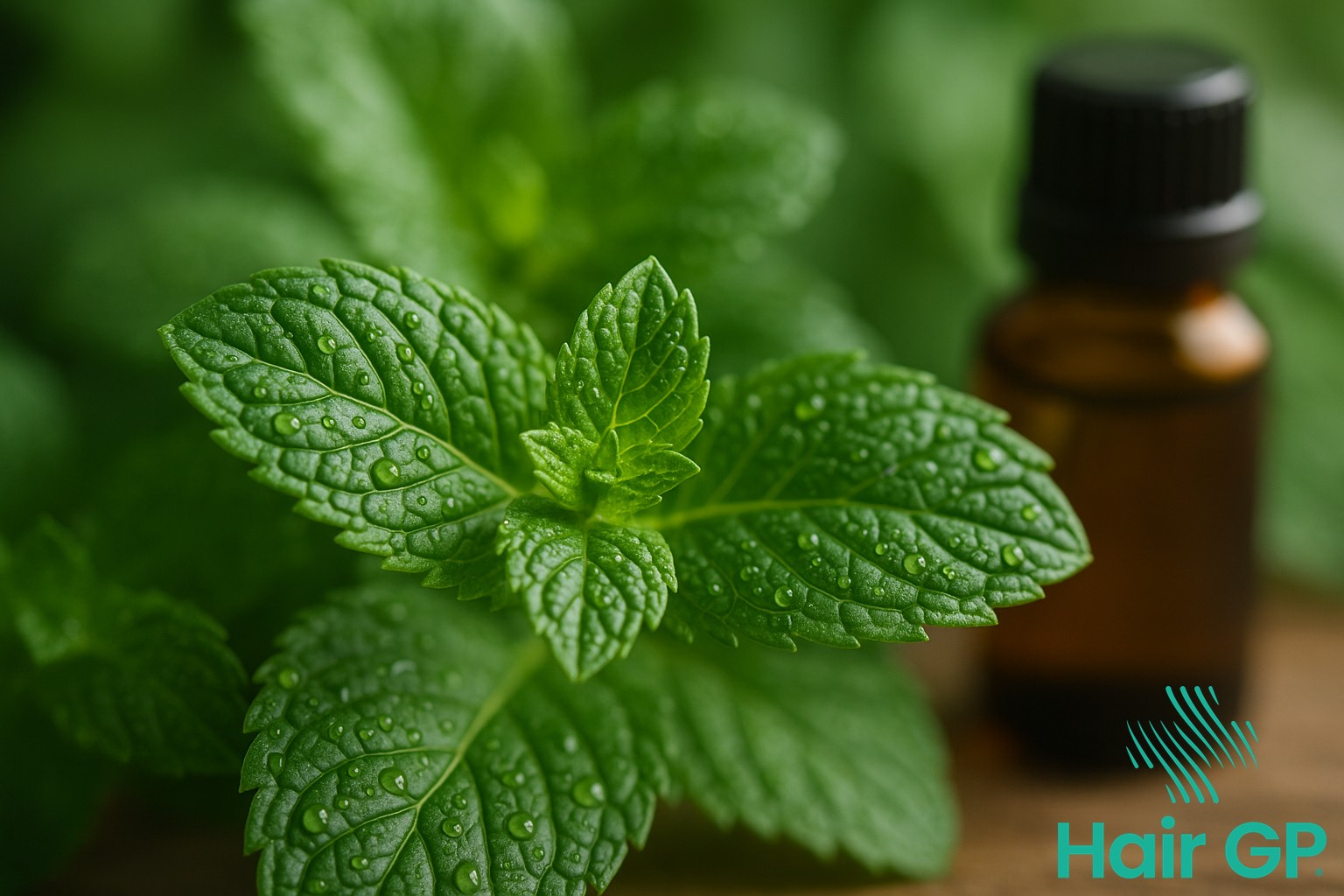
Benefits of Peppermint Oil for Hair and Scalp
Peppermint oil delivers remarkable benefits for scalp health and hair vitality through its potent bioactive compounds. This natural remedy effectively addresses common hair concerns whilst promoting overall follicular health and reducing inflammation[2]. From stimulating growth to soothing irritation, peppermint oil offers comprehensive care for diverse hair needs.
Promotes Hair Growth and Reduces Hair Loss
Research demonstrates that peppermint oil significantly increases blood flow to hair follicles, awakening dormant follicles and promoting robust growth. A landmark study revealed that peppermint oil outperformed minoxidil in stimulating hair growth, showing a 92% increase in dermal thickness after four weeks[3]. The oil’s vasodilating properties enhance circulation, delivering vital nutrients to follicles whilst reducing hair loss.
Soothes Scalp Irritation and Dandruff
The menthol component provides immediate cooling relief for itchy scalp conditions whilst delivering powerful anti inflammatory benefits. Its antimicrobial properties combat dandruff-causing microorganisms, reducing flaking and irritation. Additionally, peppermint oil helps regulate oil production, preventing excessive sebum that can clog follicles. This balancing effect creates optimal conditions for shiny hair growth whilst maintaining scalp comfort.
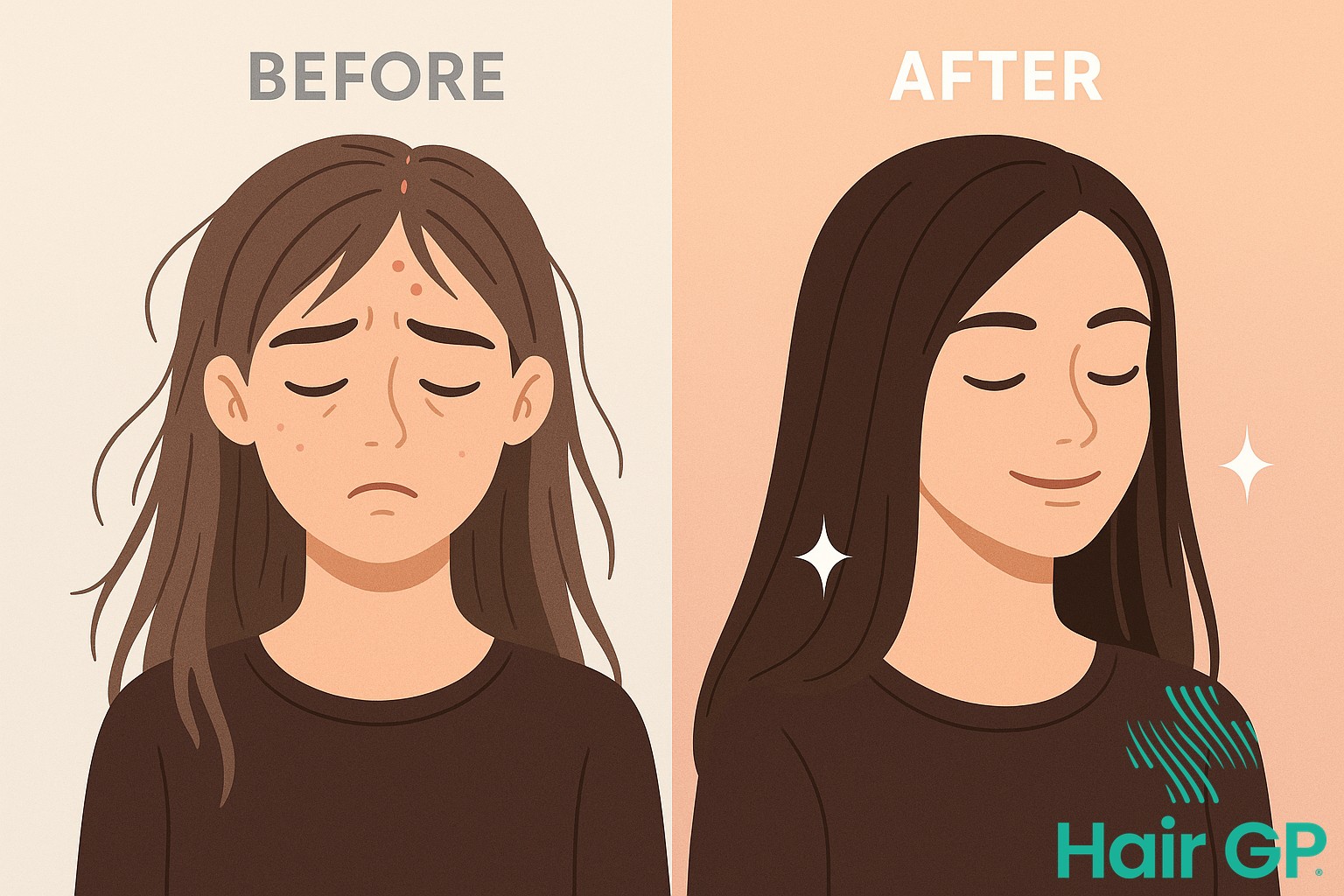
How Peppermint Oil Stimulates Hair Growth
The mechanism behind peppermint oil’s effectiveness for hair growth lies in its primary component, topical menthol, which triggers vasodilation in scalp blood vessels. This enhanced blood circulation delivers vital nutrients and oxygen to hair follicles, creating an optimal environment for healthy hair development. Research demonstrates that menthol stimulates cold-sensitive TRPM8 receptors, promoting increased microcirculation within the dermal papilla [4].
Remarkably, comparative studies have shown peppermint oil’s potential to rival minoxidil, the gold-standard treatment for androgenetic alopecia. A four-week trial revealed that 3% peppermint oil solution promoted significant hair growth, even surpassing minoxidil’s performance in follicle depth and thickness measurements [5]. This breakthrough suggests that natural alternatives may offer comparable benefits for those experiencing pattern hair loss, without the potential side effects associated with pharmaceutical interventions.
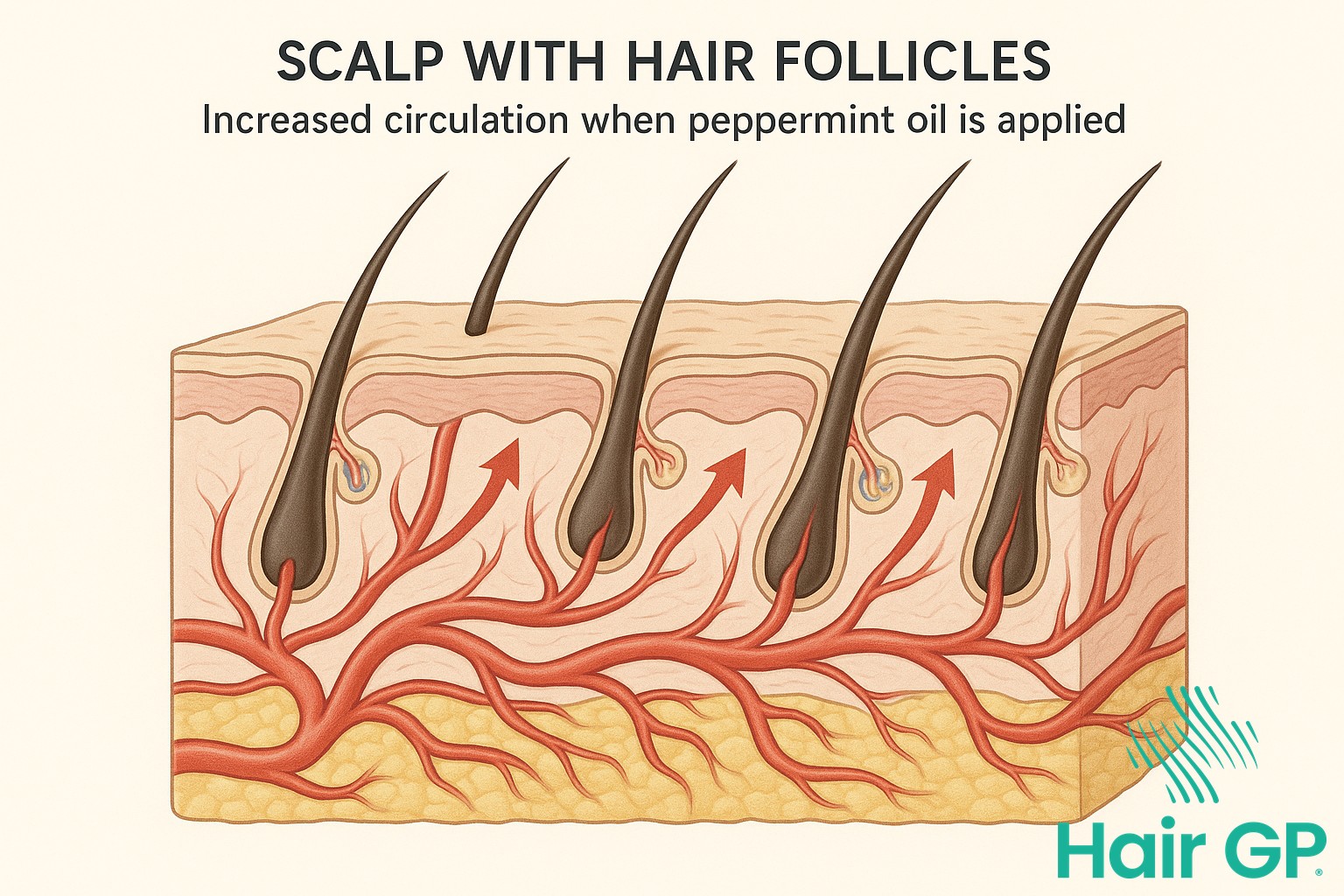
How to Use Peppermint Oil for Hair Care
Incorporating peppermint oil into your hair care routine is straightforward when you follow proper application methods. These simple techniques ensure safe, effective use whilst maximising the oil’s benefits for scalp health and hair growth.
Adding to Hair Products
Enhance your existing shampoo or conditioner by adding a few drops of peppermint oil. Use 10-15 drops per 250ml bottle, shaking well to distribute evenly. For optimal mixing, pour a small amount of product into your palm first, then add 1-2 drops. Store enhanced products in cool, dark places to maintain potency. This method provides consistent benefits with every wash.
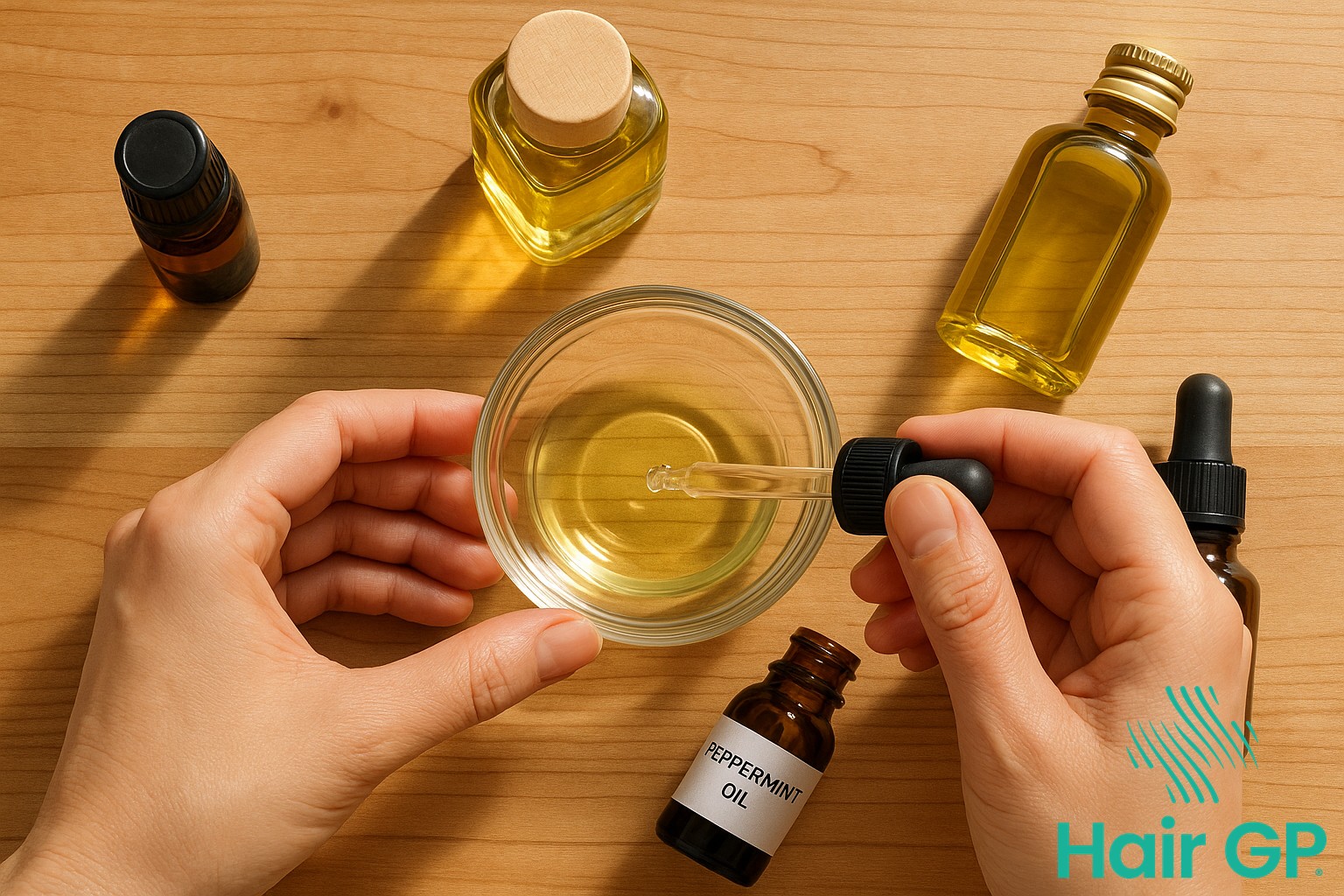
Best Carrier Oils to Mix with Peppermint Oil
Selecting the right carrier oil is essential for maximising peppermint oil’s therapeutic benefits whilst minimising skin irritation. Jojoba oil stands out as an excellent choice due to its similarity to human sebum, allowing deeper penetration without leaving an oily residue. Prunus amygdalus dulcis oil, commonly known as sweet almond oil, offers exceptional emollient properties that complement peppermint’s cooling effects, making it ideal for massage blends. Helianthus annuus seed oil provides a lightweight option rich in vitamin E, enhancing skin absorption whilst protecting against oxidative damage. Each carrier oil serves to dilute peppermint’s potency appropriately, typically at 2-3% concentration for topical applications, ensuring safe and effective use across various skin types. You must ALWAYS do a patch test before using any essential oils to avoid allergic reaction whether adding to an oil or your shampoo.
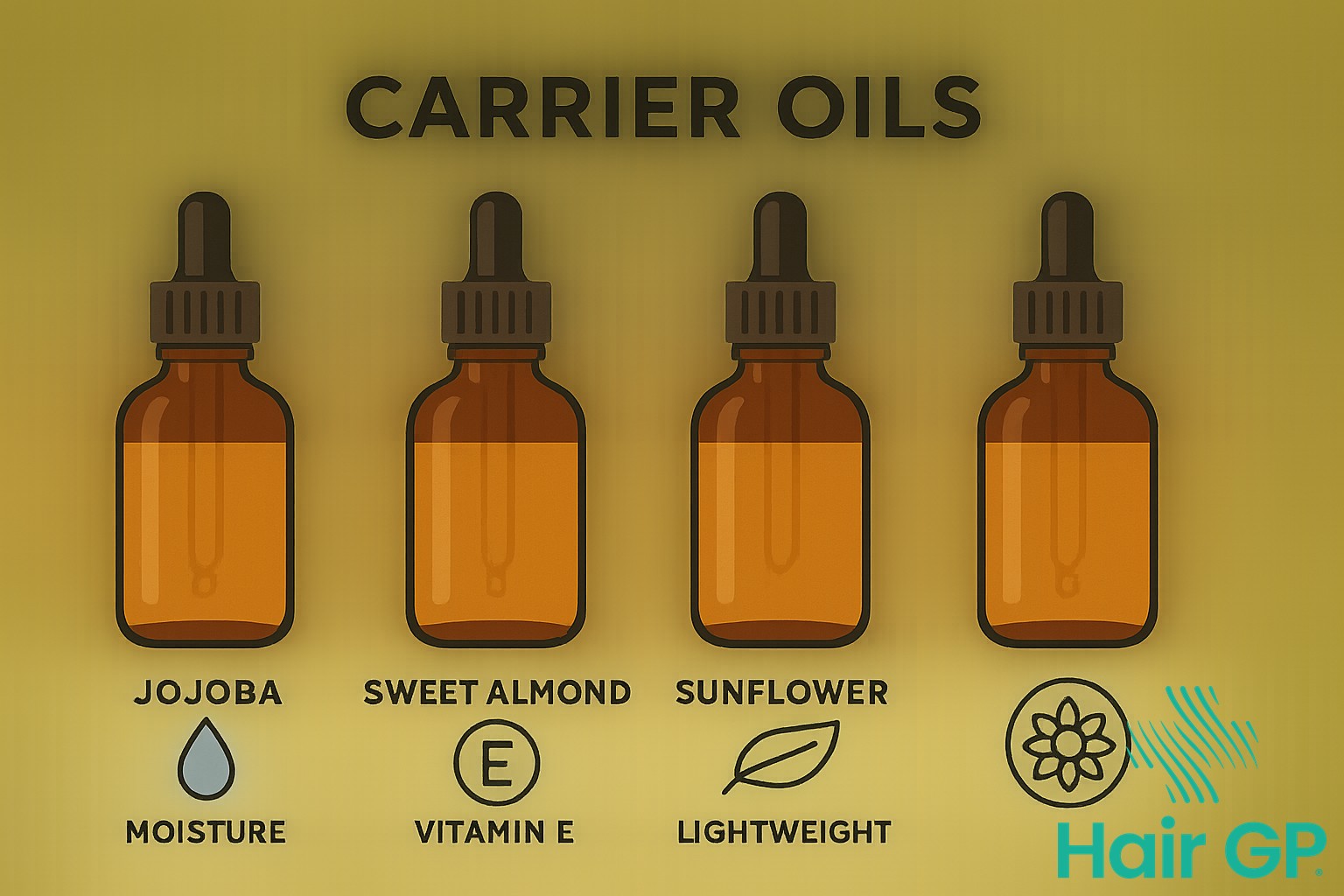
DIY Peppermint Oil Hair Treatments
Transform your hair care routine with simple, effective peppermint oil treatments you can create at home. These DIY recipes help soothe scalp irritation, ease itching, and promote healthy hair growth using natural ingredients.
Stimulating Scalp Massage Oil
Mix 5 drops of peppermint oil with 30ml of carrier oil like jojoba or coconut. Gently massage into your scalp using circular motions for 5-10 minutes to boost circulation. Apply this treatment twice weekly to help ease dryness and enhance your beauty routine.
Overnight Hair Growth Serum
Combine 3 drops peppermint oil, 2 drops rosemary oil, and 20ml argan oil to create a potent ointment. Apply to clean scalp before bed, focusing on thinning areas. Rinse thoroughly in the morning with lukewarm water to soothe and nourish your hair.
Precautions and Potential Side Effects
Whilst peppermint oil offers numerous benefits, proper precautions ensure safe usage. Always dilute with carrier oils before application, as undiluted use can cause skin irritation and burning sensations[6]. Conduct patch testing 24 hours before use, particularly when incorporating into beauty products or cosmetics. The potent fragrance may trigger headaches in sensitive individuals. Those with irritable bowel syndrome should exercise caution, as topical application near the abdomen might exacerbate symptoms[7]. Avoid contact with eyes and mucous membranes. The strong scent and smell can overwhelm some users, so start with minimal amounts and adjust gradually.
Conclusion
Peppermint oil for hair emerges as a versatile solution in natural hair care, offering multiple benefits from stimulating hair growth to maintaining optimal scalp health. This powerful essential oil works by improving circulation to hair follicles, potentially rivalling conventional treatments whilst providing a refreshing, chemical-free alternative. Whether addressing dandruff, thinning hair, or simply seeking healthier locks, peppermint oil delivers results when used correctly. Remember to always dilute this potent essential oil with appropriate carriers and conduct a patch test before full application. Start your journey towards improved scalp health and stronger hair by incorporating properly diluted peppermint oil into your routine, beginning with small amounts to assess your skin’s response.
Frequently Asked Questions
No, never apply undiluted peppermint essential oil directly to your scalp. Always dilute it with a carrier oil like jojoba or sweet almond oil at a 2-3% concentration to prevent irritation and burning sensations.
For best results, use peppermint oil treatments 2-3 times per week. You can add a few drops to your regular shampoo and conditioner bottles for daily use, or apply diluted oil treatments before washing.
Some studies suggest peppermint oil may be comparably effective to minoxidil for certain types of hair loss, particularly by improving blood circulation to hair follicles. However, more research is needed for definitive conclusions as the study was small and short in duration.
Yes, peppermint oil’s antimicrobial and anti-inflammatory properties can help reduce dandruff by soothing scalp irritation, reducing excess oil production, and creating an unfavorable environment for dandruff-causing microorganisms.
References
- Mahendran G, Rahman LU. Ethnomedicinal, phytochemical and pharmacological updates on Peppermint (Mentha × piperita L.)—A review. Phytother Res. 2020;34(9):2088-2139.
- McKay DL, Blumberg JB. A review of the bioactivity and potential health benefits of peppermint tea (Mentha piperita L.). Phytother Res. 2006;20(8):619-633.
- Oh JY, Park MA, Kim YC. Peppermint Oil Promotes Hair Growth without Toxic Signs. Toxicol Res. 2014;30(4):297-304.
- Patel T, Ishiuji Y, Yosipovitch G. Menthol: a refreshing look at this ancient compound. J Am Acad Dermatol. 2007;57(5):873-878.
- Oh JY, Park MA, Kim YC. Peppermint Oil Promotes Hair Growth without Toxic Signs. Toxicol Res. 2014;30(4):297-304.
- Zaccara S, Panfili G, Benvenuto M, et al. Contact allergy to essential oils: a systematic review. Contact Dermatitis. 2016;75(6):329-340.
- Alammar N, Wang L, Saberi B, et al. The impact of peppermint oil on the irritable bowel syndrome: a meta-analysis of the pooled clinical data. BMC Complement Altern Med. 2019;19(1):21.


